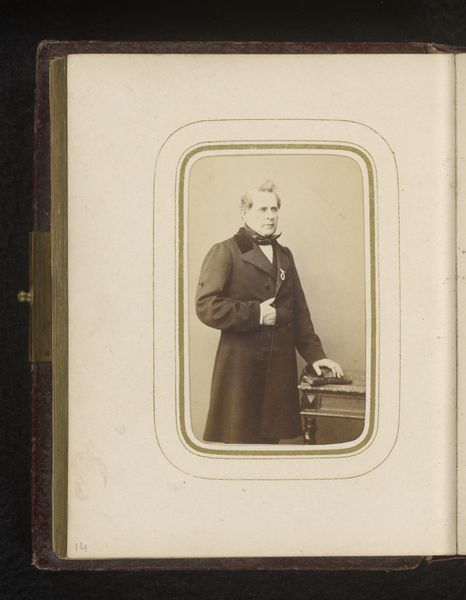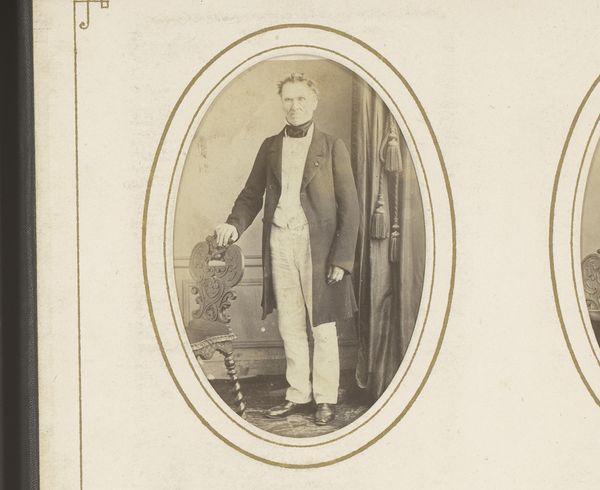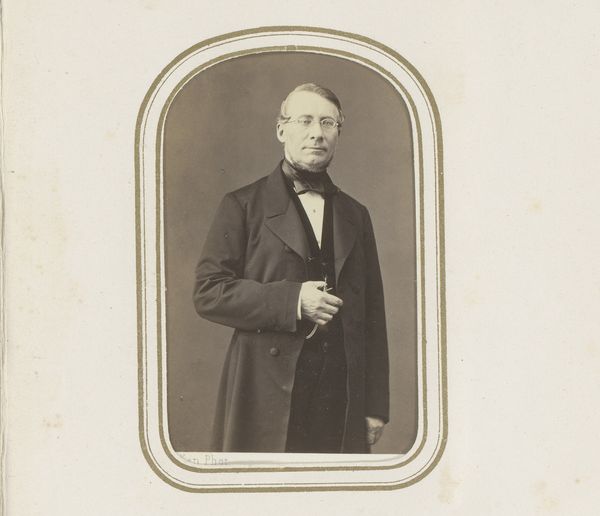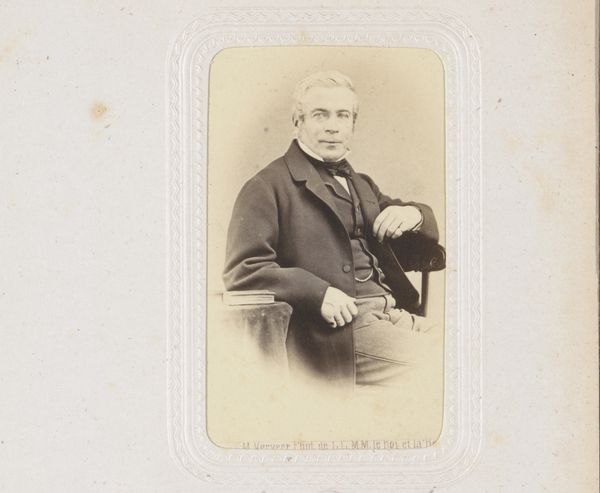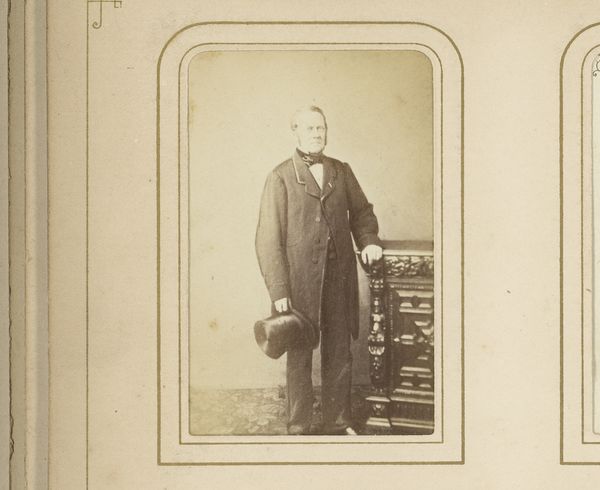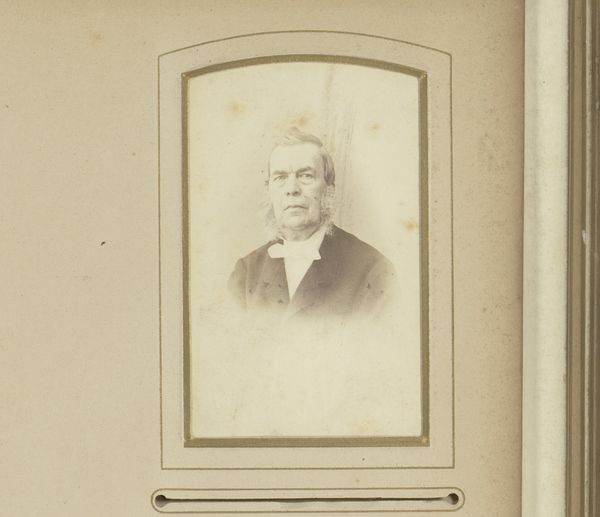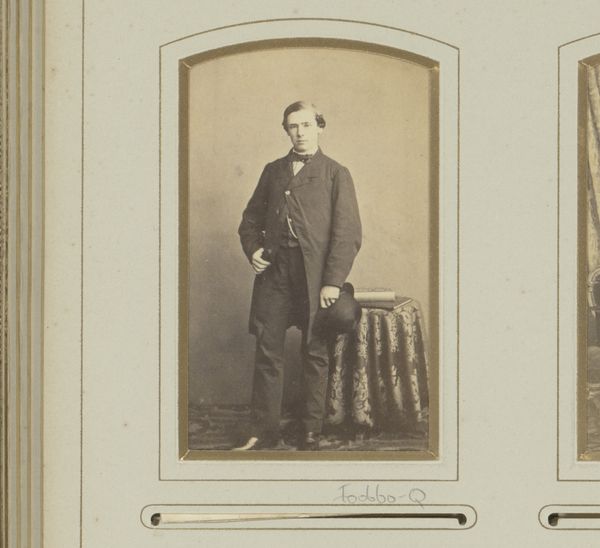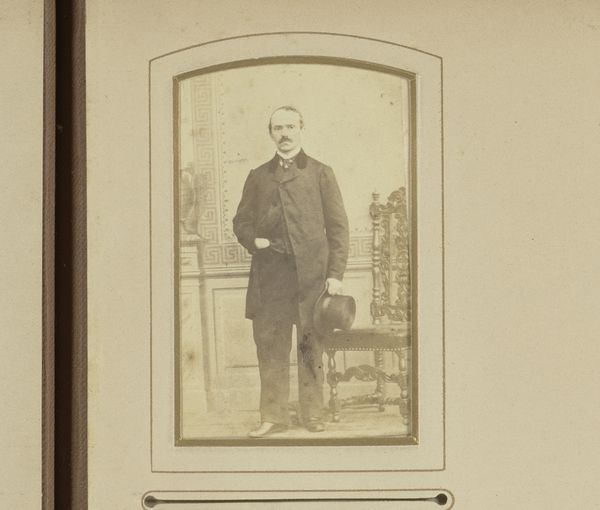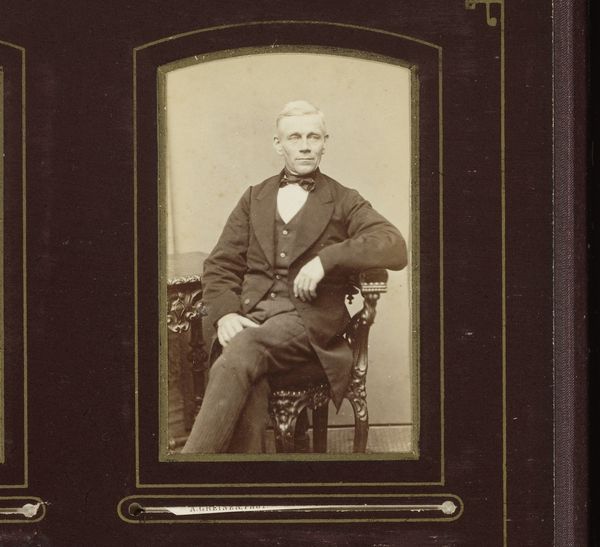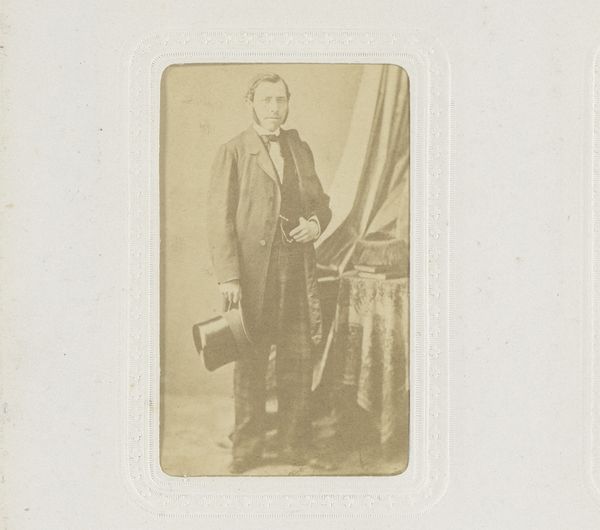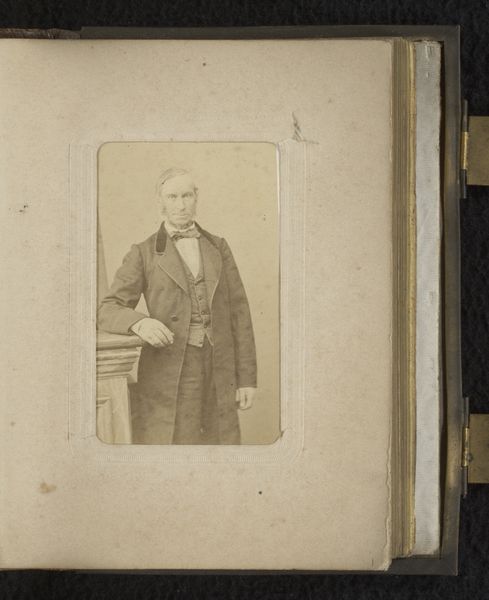
print, photography
#
portrait
# print
#
photography
#
historical photography
#
portrait reference
#
realism
Dimensions: height 85 mm, width 52 mm
Copyright: Rijks Museum: Open Domain
Curator: Welcome. Here we have a photographic print, tentatively dated between 1863 and 1870, entitled "Portret van een staande man met hoge hoed in de hand" attributed to Henri Blanckart. The subject stands in formal attire, holding a top hat. Editor: There's something incredibly melancholic about it, don’t you think? It's like peering into a bygone era, catching a fleeting glimpse of a somber gentleman in his prime. Curator: The tonal range is certainly restricted, lending itself to the perceived melancholia. But the meticulous composition speaks to the prevailing aesthetic concerns of the era. Notice the careful placement of the subject within the frame, the symmetrical backdrop elements, and the stark lighting which all adhere to conventional portraiture practices. Editor: I get that, the pose is stiffly formal—hand tucked in, hat precisely positioned—but his gaze has a faraway quality. And the wallpaper pattern behind him with those recurring rectangular Greek shapes; they feel like endless doors opening and closing, maybe even trapping the sitter inside. Curator: Indeed. One can't overlook how the medium itself—photography—democratized portraiture, and introduced new ways to capture and preserve the human likeness in this realistic depiction. Yet the high contrast flattens the dimensionality, focusing the analysis onto its surface textures, or semiotic arrangement of objects. Editor: It's amazing to imagine people lined up at portrait studios wanting to capture some version of themselves to give as keepsakes. But I see what you mean, its flatness keeps this feeling so…distant from a touch. He feels trapped in two dimensions by choices or societal standards maybe; like an effigy of memory made un-touchable and now kept at a museum in perpetuity. Curator: It offers a valuable lens through which to examine shifting attitudes towards representation, identity, and the very nature of seeing. Editor: And it asks to reflect on your own past and future; all we hope for is to leave something behind that means anything to anyone.
Comments
No comments
Be the first to comment and join the conversation on the ultimate creative platform.
